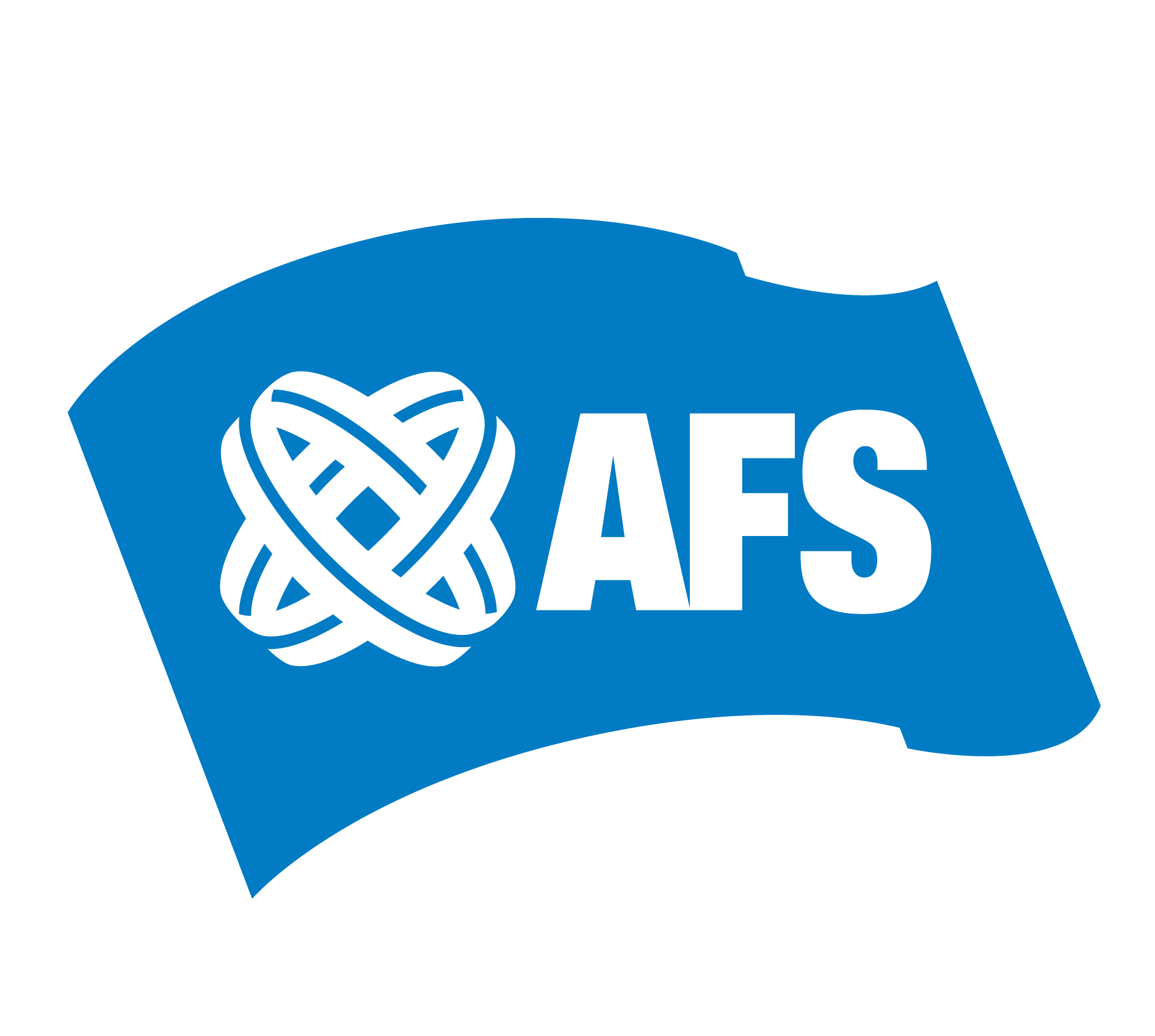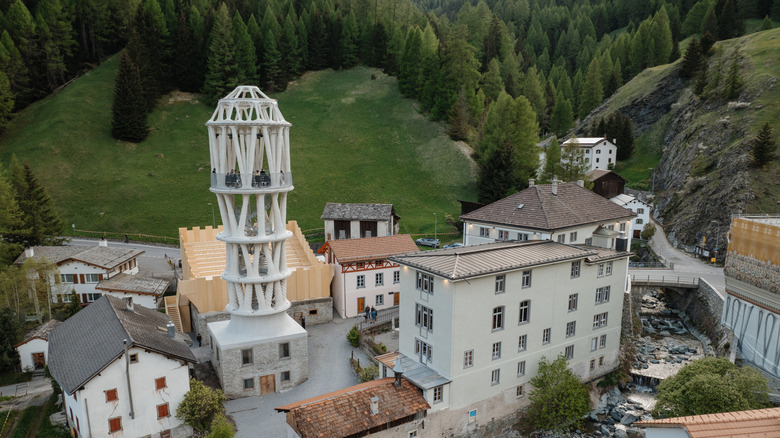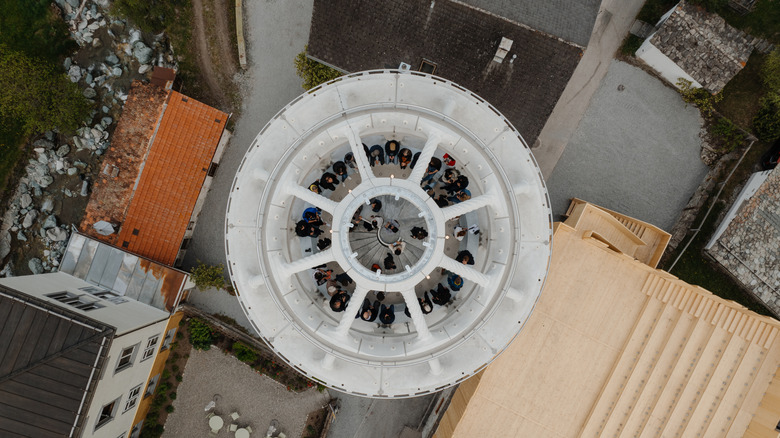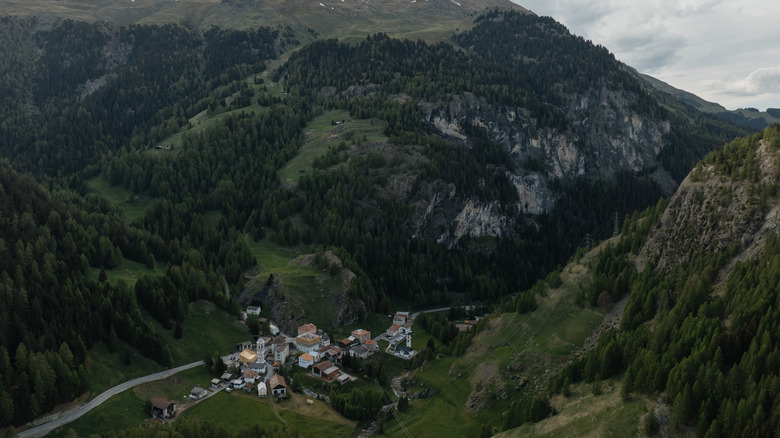In the Albula Valley, buried among the Alps of southeast Switzerland, the tiny town of Mulegns now rests in the shadow of a ghostly white tower standing nearly 100-feet tall. The haunting presence of Tor Alva (“White Tower” in English) seems fitting for a village whose population once exceeded 100, but now has only 12 residents remaining, according to the official Tor Alva website. Once a popular stagecoach stop on the route from Zurich, one of Europe’s prettiest medieval cities, to St. Moritz, one of Switzerland’s prettiest and most iconic destinations, Mulegns is experiencing a movement, led by the Nova Fundaziun Origen, to breathe life back into its abandoned buildings. Tor Alva, which has been constructed using 3D printing methods, and built on the roof of the town’s historic carriage depot, is just one part of their effort to revive the Graubünden region in which Mulegns is located.
Since the tower’s unveiling in May 2025, it’s been getting quite a buzz. Depending on who you speak to, it resembles either a layered cake, in honor of the many confectioners from Graubünden who brought their wealth home after earning success in the cities, Baroque architecture of its master builders, or filigree jewelry. Constructed by robots using material-efficient, intricately-printed layers of concrete meant to bear load, Tor Alva is a pioneering structure — the first of its kind. To date, no other 3D-printed material has been strong enough to be used in heavy-weighted construction. Its presence is bridging the gap between the past, present and future of architecture, and of Mulegns itself. And thanks to its makers’ innovation in design, it’s officially the tallest 3D-printed tower in the world.
The vision and process behind Tor Alva
The Nova Fundaziun Origen exists to regenerate local culture through performing arts, original handicrafts, and contemporary architecture. Since the 20th century, populations in the area have plummeted as birth rates decrease and younger inhabitants have moved to the cities for work. Origen funded Tor Alva’s construction, requesting a vertical performance space that showcases the Alpine scenery of Graubünden, attracting more visitors — and thereby residents to support the influx of tourism.
The minds behind Tor Alva include Architect Michael Hansmeyer and Professor of Digital Building Technologies Benjamin Dillenburger of the Federal Institute of Technology, ETH Zurich. Together with Professor of Physical Chemistry of Building Materials Robert Flatt, who invented the special new concrete used in the tower’s construction, a method of design was implemented wherein robots could apply concrete to the columns in layers without use of casting molds, working faster than a human or human-operated machine ever could. It took them 900 hours to print a total of 32 individual columns in the lab, each ranging from 11 to 19 feet, and accented with its own unique ornamentation that can be seen when viewed up close.
The columns were then brought on site and the tower was screwed together in a matter of days (though not consecutive ones). The lightness of the concrete — which was layered rather than dried solid in casts — and the tower’s dry construction sans plaster means it can just as easily be taken apart and moved to a new location to revitalize another town once Mulegns’ lease on the tower runs out in five years. Overall, Tor Alva is a perfect example of reversible architecture, a sustainable practice that minimizes environmental impact. Its temporal nature and delicate, lattice-like design give it an even more ethereal presence among the once-abandoned buildings in its shadow.




